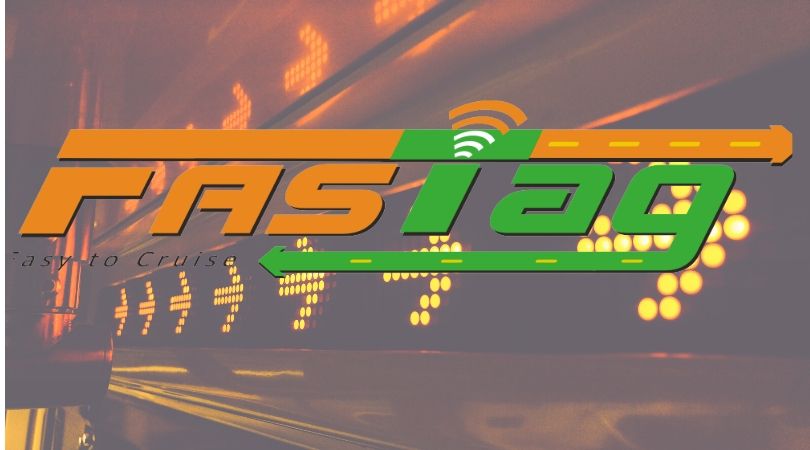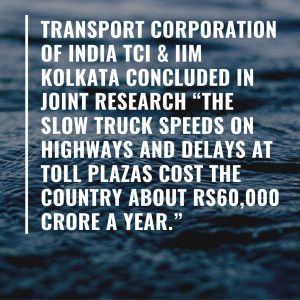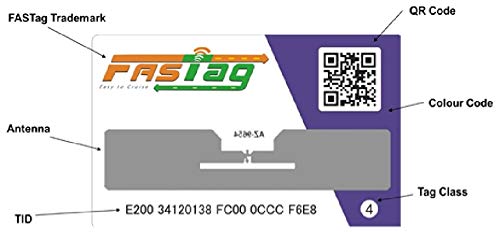How Does Fastag Work?
- 8 December 2019 | 1846 Views | By Abhinav Mishra

Developments in road infrastructure have made long-distance driving less exhausting and more enjoyable. Over 500 tolls are operating 24X7X365, reaping revenues to maintain high quality highways along with security, safety and regular maintenance. While charging toll is the prime source of road infrastructure, the limited capacity of tolls, long queue of vehicles. This leads to undue increase in commute timings, traffic jams and mismanagement of roads, despite better road conditions. At the same time, keeping, finding or getting the exact change at toll booths that collect payments for the usage of these roads is a big hassle. FASTags are introduced to address this problem.

As we all are familiar with the Indian government’s ‘Digital India’ initiative, another step taken towards this in the road transportation sector is electronic toll collection through the implementation of FASTag. It was set to become mandatory from December 1, 2019, on all national highways, but Nitin Gadkari, the Road Transport and Highways Minister, has announced that FASTags will become mandatory for all vehicles, private and commercial, from 15th December 2019.
To foster the seamless movement of vehicles and reduce traffic congestion at toll plazas, the ministry of road transport and highways has made it mandatory for all vehicles to have FASTags for toll collection. While the bigger picture sure is promising, what will the shift towards cashless toll payments entail for the end-user? Let us take a closer look.
About FASTag
The digital system of FASTag has been developed by the National Payments Corporation of India (NPCI) and is based on the National Electronic Toll Collection (NETC) program. FASTags were introduced over four years ago and till now, their usage had been optional and non-compulsory. It is an easy to use, reloadable tag that authorizes the automatic deduction of toll charges as one crosses the designated toll lane and lets the user pass through the toll plaza without stopping for doing the cash transaction.
A FASTag is a sticker containing an embedded chip and antenna. They are generally affixed on the windscreen of the vehicle. With the help of a FASTag, the user will not have to halt their vehicle at toll plazas to pay the toll.

As soon as the vehicle crosses the toll plaza, the toll fee will get deducted from the bank account or the prepaid wallet linked to the FASTag affixed on the vehicle’s windscreen. You can recharge your FASTag account using a debit card, credit card, net banking, etc. A FASTag account will capture all the transactions related to the vehicle. SMS alerts for each transaction, low balance, and so on, would be available. FASTag is vehicle specific and once affixed, cannot be transferred. When you sell your vehicle, you can close your FASTag account related to that vehicle. The FASTtag works on Radio Frequency Identification (RFID) technology. Let us first understand about the RFID technology.
FasTag Color Codes
Depending upon the vehicle class, fastag has been categorized into several codes as under:
|
Vehicle Class for FasTag |
Colour
(Pantone) |
| Car / Jeep / Van/ Tata Ace and similar mini light commercial vehicle | 7671C |
| Light Commercial Vehicle | 7577C |
| Three Axle Commercial Vehicles | 102C |
| Bus/Truck | 7740C |
| 4 to 6 axle | 219C |
| 7 or More Axle | 7688C |
| Heavy Construction Machinery (HCM)/Earth Moving Equipment (EME) | 19-4220 TPX |
What is RFID?
RFID is an abbreviation for “radio-frequency identification” and refers to a technology wherein a reader using radio waves captures digital data encoded in RFID tags or smart labels. RFID is similar to barcoding in that a device that stores the data in a database captures data from a tag or label. A radio-frequency identification system captures data from tags, or labels attached to the objects to be identified. Two-way radio transmitter-receivers called interrogators or readers are used to send a signal to the tag and read and interpret its response.
How to buy and activate your FASTag?
FASTags are being sold by 22 certified banks through various channels such as Point-of-Sale (POS) at National Highway toll plazas and select bank branches. A detailed list of these branches along with their helpline numbers is available on the ministry’s website. These tags are also available on the e-commerce platforms such as Amazon and Paytm. FASTags can also be acquired from select toll plazas and petrol pumps. The online FASTag installation is based on the concept of DIY (Do-It-Yourself) model, where one can self-activate the FASTag by entering vehicle details in the ‘My FASTag’ mobile app available across Android and iOS. Even if one does not have a smartphone, they can get the FASTag installed from the Point-of-Sale. In case you are buying it from a bank, at the time of activation, you need to submit the KYC (Know Your Customer) documentation as per the KYC policy of the bank. Apart from the KYC documentation, you need to submit a copy of the Registration Certificate (RC) of the car/ any other vehicle, a passport size photograph of the vehicle owner and a valid address proof along with the application for FASTag to the bank.
FASTag issued by certified banks can charge a maximum of Rs 100 for each tag, which is fixed by National Payments Corporation of India (NPCI). However, the actual tag issuing charges are defined by the bank and may vary from bank to bank
What are the advantages of using FASTag?
The implementation of FASTag can help relieve numerous problems. Since coming to a complete stop at the turnpike for cash transactions is not required, major bottlenecks on highways can be avoided. Commuters also save time that they otherwise would have wasted waiting in long queues. The quick passage of vehicles through toll plazas also helps in reducing fuel consumption and ultimately curbing air pollution. Moreover, the whole system promotes digital payments, reduces cash handling and increases transparency. FASTag also has a validity of 5 years. Also, the customers have the facility to access their statements for their Tag by merely logging on to the FASTag Customer Portal.
As an added incentive, the customers are entitled to cashback on all Toll payments using FASTag. The cashback amount for a month is credited back to the users FASTag account within a week of the subsequent month.
Apart from rapid digitization, FASTag will also help in recovering the costs of building world-class roads as it will remove human interference from the system and get rid of leakages that may exist. FASTag benefits the government also in several ways. It facilitates digital payments and makes it easier to keep a watch on vehicles and the toll booths.
The cost of storage and transportation of cash as well as manpower at the toll booths also significantly reduces. Reports also indicate that the government plans to use data from the devices used in electronic toll collection to monitor traffic and rework its toll policy as well.
Conclusion
FASTag is a complete solution for a stress-free trip on the national highways. This is a big step in getting the country to move from an offline to an online platform. It will even try to keep a check on middlemen and the corruption prevailing in the road transportation sector. More than 420 toll plazas across national and state highways are currently equipped to operate FASTag. More toll plazas are proposed to be added under the FASTag program in the near future.











